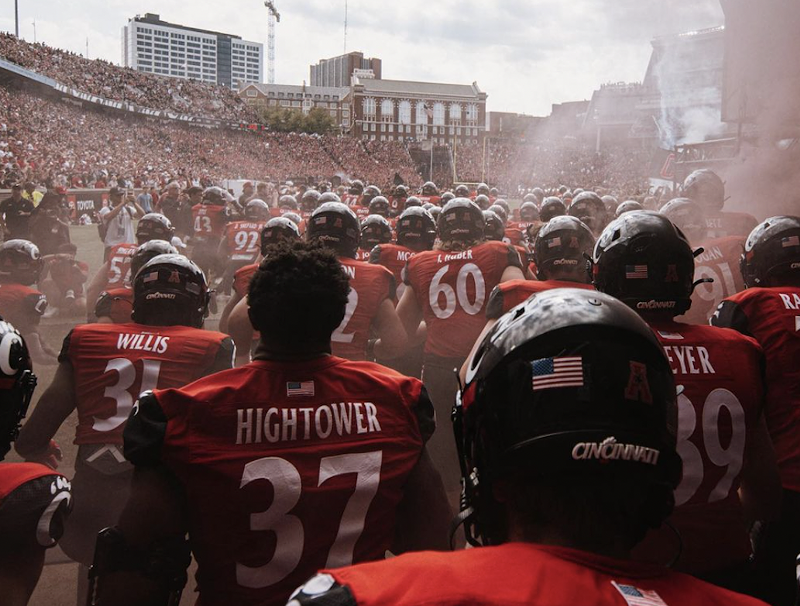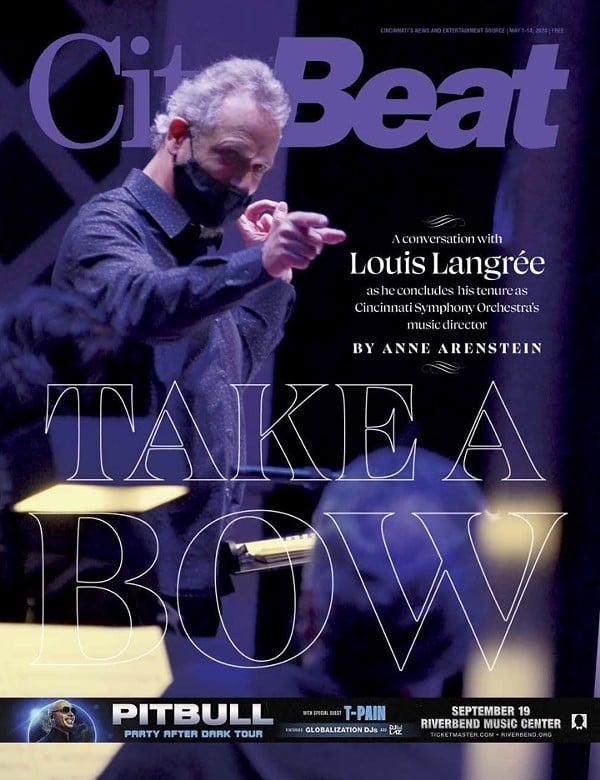
A former Cincinnati sportswriter friend, now a social justice studies professor at Miami (Ohio) and somewhat detached from sports interest, greeted me in out-of-the-blue fashion at a recent meeting for lunch.
“What about college football?” he asked, with a big roll of the eyes.
Quite coincidentally, I had already begun work on this CityBeat column.
As University of Cincinnati football celebrates the identity to which it aspired for a hundred-plus years — membership in a true “major league” conference — the college game writ large is suffering an identity crisis.
It’ll be ok in the end, and UC will in due time get its full share of respect as one of the “haves.” But for now, pardon many longtime college fans if they’re less than fully excited for the “Big 12” Bearcats. Their move from the American Athletic Conference is a part — if only a quite small one — of a nationwide upheaval of schools switching leagues, some far more puzzlingly than UC.
The core national fanbase is hurting, feeling something of great value has been lost. They rue the game’s traditional color and regional character being sacrificed to a new reality of illogically constructed mega-leagues, leading to an expanded national playoff. It’s all due to the vision and algorithms of TV network smart guys who have invested college administrators in caring only about the highest possible national ratings and the resultant revenue.
This stuff started some years ago, with odd moves like West Virginia to the very western Big 12, Boston College to the very Southern Atlantic Coast Conference and University of Colorado Boulder to the shores of the Pacific (12). It reached its crescendo just recently when that same Pac 12 — with iterations dating back more than 100 years — was rendered extinct beyond the already set 2023 season.
Due to TV markets, demographics and such, eight of the Pac’s 12 opted to flee, chasing the final available spots in the burgeoning Big Ten and Big 12 loops. Two of the other four Pacific schools — the elite institutions Stanford and University of California, Berkeley — will probably find a decent home, but it may be, absurdly, in the Atlantic Coast Conference. (And don’t worry about the University of Colorado. Before the Pac 12 blew totally apart, the Buffaloes jumped safely back into the same Big 12 they had abandoned in 2011).
As my pal’s random comment shows, it’s not just far west people who are unsettled by the Pac 12’s demise. Millions of Ohioans remember fondly when schools from that West Coast paradise would brighten Ohio’s dark and dreary November evenings, battling in their gorgeous afternoon sunshine for the right to host the Big Ten champs in the Rose Bowl — an iconic New Year’s Day spectacle if ever there was one. Southern California, Washington, Oregon and UCLA were usually the main players in that drama, but now they’re…well, they’re all joining the Big Ten. And the Rose Bowl has already lost much of its identity, now just one of a big handful of bowls that could be hosting teams from anywhere.
Ohio State still has Michigan to hate, and the old core of the Big Ten is intact (except how the heck did Rutgers get in there?). Still, it bothers OSU fans that not only is the Pac 12 doomed, but that, for example, the Big 12’s wholesale turnover renders it impossible to recognize a league once led with great history and color by Oklahoma and Nebraska. The Sooners will be gone to the Southeastern Conference in 2024, and the Cornhuskers are already in the Big Ten.
In a related consequence for Scarlet and Gray backers, the TV-driven expansion of the postseason playoff field to 12 (for 2024) will surely suck the spirit from OSU’s annual regular-season game with Michigan. If the Buckeyes and Wolverines are both having excellent campaigns — setting up what formerly would have been an unspeakably titanic clash in late November — that game will now be nothing more than a seeding exercise, for a playoff for which both would be sure to qualify.
Would an unbeaten or once-beaten Ohio State team choose to rest some only slightly nicked star players for a regular-season clash with a Michigan team of similar standing? I actually could see that happening. NFL teams routinely rest players or otherwise “tank” in late regular-season games, prioritizing their best health and their seeding for postseason — the only thing that matters in their world — and this new college landscape of mega-conferences with no real identity has widely been described as “NFL Lite.”
Why does TV feel all this will make the game more lucrative? I think it could be based on the immense aggregate purchasing power of people who love to watch football but aren’t really fanatics of any particular school or league. From Maine to California, from late August until mid-January, it’s grab some brews, order pizza, and watch whatever games are on. There are so many of these people, far more than the truly invested fans, that the networks — and more importantly the schools — don’t care as they once did about history and traditions. If all those only moderately involved fans are going to watch regardless, then let TV have its way and structure the leagues and the game times for just the right mix of key markets and total viewer households. Traditions, along with sane travel schedules for “student-athletes,” be damned.
But the good news here, strangely, is that UC football was never really a part of that national color and tradition which is now rather shredded. UC has no great rivalries or ancient memories to be disrupted by the new landscape. This is a program that needed 71 years from the 1936 inception of the Associated Press national poll to finish a season ranked in the Top 20.
UC earned its promotion from the NCAA’s second-tier leagues the old-fashioned way, by a real commitment to improve its former laughingstock program. The Bearcats finally reached a New Year’s Day bowl game in 2009, under coach Brian Kelly, and they went to their first Final Four (the four-team “CFP,” or College Football Playoff) under Luke Fickell in 2021.
Still, however, the Bearcats are facing disrespect. At the Big 12’s preseason media event, writers and broadcasters predicted them 13th in the now-14-team league. The two key questions regarding a better outcome are new head coach Scott Satterfield and new quarterback Emory Jones. Satterfield was a big winner at mid-major Appalachian State but a ho-hum 25-24 in four seasons at Louisville. Jones, impressive physically at six foot, three inches and 212 pounds, has been a starter in the big time at both Florida and Arizona State, but the two-time transfer was obviously not a perfect fit at either place.
UC’s Big 12 action starts Sept. 23 when Oklahoma travels to Nippert Stadium, followed by dates against Brigham Young, Iowa State, Baylor and Oklahoma State. Compared to anything UC has faced before on the gridiron, that’s a true murderer’s row.
Congratulations, men, and good luck.
Subscribe to CityBeat newsletters.
Follow us: Apple News | Google News | NewsBreak | Reddit | Instagram | Facebook | Twitter | Or sign up for our RSS Feed





